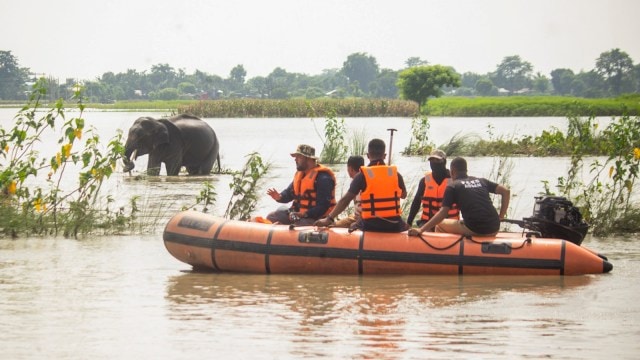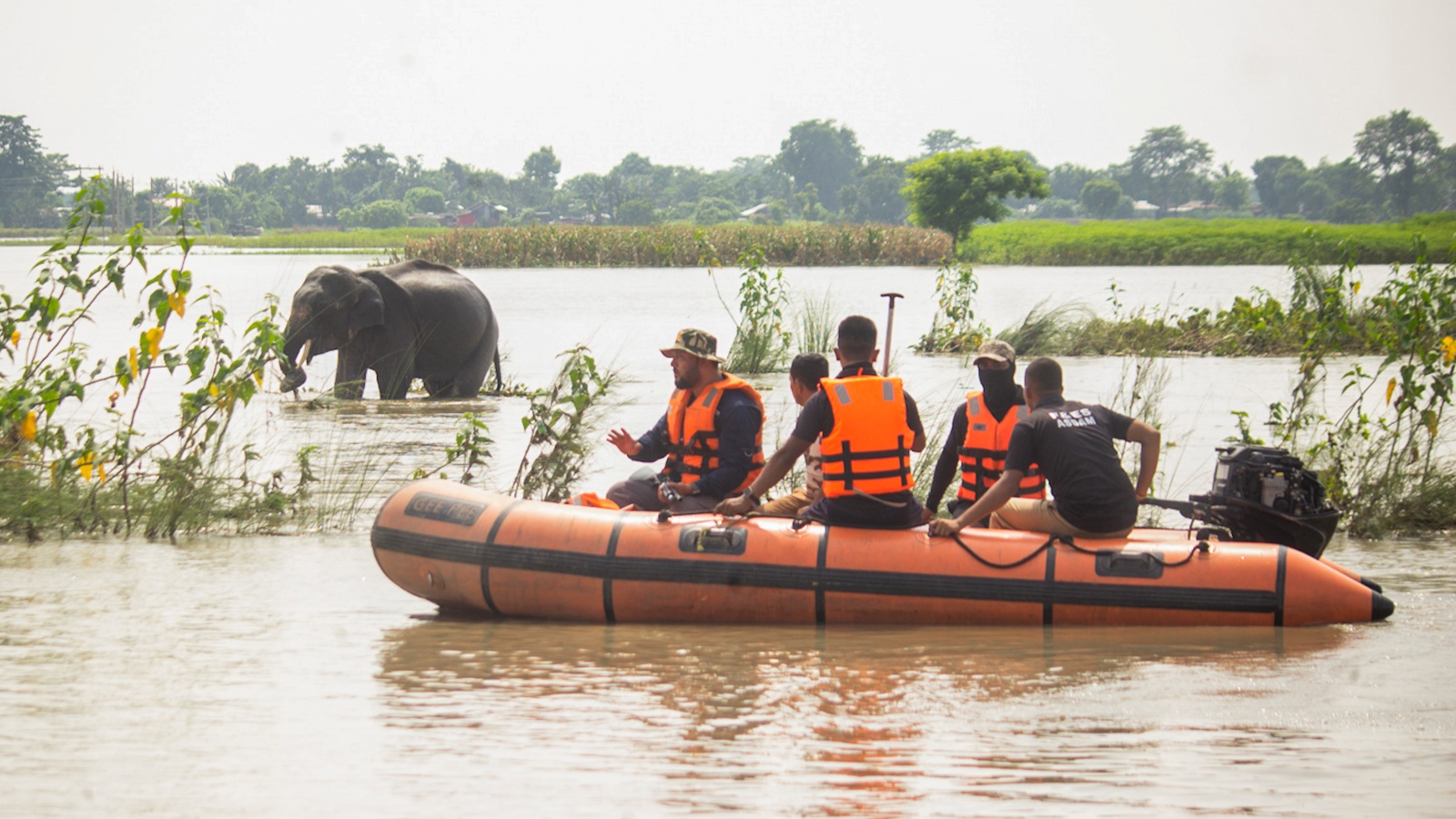
Assam’s geography is a product of various influences. These include the mighty eastern Himalaya, its fragile geology and forested landscape, the effect of the southwest monsoon, the turbulence of the Bay of Bengal, hundreds of braided and meandering rivers, a complex biodiversity, and billions of tons of sediment originating from the Himalaya. Assam and its neighbours have never escaped from these commandeering natural features. The state’s annual floods are a by-product of these. The months of July and August are infamous for the suffering it brings to the state’s people and wildlife.
Are floods unusual for Assam? The answer is no. But a wide range of evidence suggests an increase in the intensity and impact of the annual floods after the Assam earthquake of 1950, recorded at a moment magnitude of 8.6. This earthquake, like many earlier ones (for instance, the one in 1897), introduced several changes in Assam’s environment. The imprints of these changes were stamped onto Assam’s rivers, including on the powerful Brahmaputra, other water bodies, and paddy fields, amongst others, most of which failed to revert to their original state. The environmental crisis of 1950 aggravated Assam’s annual flooding pattern. The effects were felt from 1952 onwards.
How has Assam’s population coped with recurrent floods? As early as 1950, Assam had asked the Government of India to build embankments to help the state overcome overwhelming floods. A committee appointed by the government in 1951, headed by G R Garg of the Central Waterways, Irrigation and Navigation Commission, thought otherwise. The Garg committee warned against any move to build embankments. It insisted that “in nature’s economy, land building and drainage of its basin are the two main functions of a river” and that embankments might serve a useful purpose if the rivers were stable and carried little silt. But if the rivers carried huge amounts of silt, Garg warned, “embankments would probably cause more harm than good. This will also upset (the) land building process and drainage systems.”
Despite such apprehensions, Assam pushed for embankments. Between the 1950s and 1970s, thousands of kilometres of embankments were constructed along the Brahmaputra, the Barak, and their numerous tributaries. Drawing from local field experiences, broad guidelines drawn from engineering manuals, and the collective intelligence of bureaucrat-engineers, contractors and labouring masses, these embankments were constructed at an enormous speed. Technological and ideological inspiration to build these muddy embankments were drawn mostly from the American and Chinese examples of dykes and embankments. Global experts, too, frequented the state to understand Assam’s flood woes and to guide Indian technocrats in resolving the state’s annual floods. To oversee such a mammoth infrastructural project, the need for an overarching institution, having adequate political, legal, and technological mandate, was felt. The establishment of the Brahmaputra Board in 1982, which had several avatars, was a result of this.
These embankments were the first major direct intervention aimed at controlling water flow on such a vast scale. Embankments had a simple goal: They would restrict the river from flooding fields, damaging crops, properties, livestock but they would keep the fields adequately wet. These embankments were constructed using government finance. Assam had to part with a significant portion of its annual income to build and sustain this infrastructure.
The earliest response to this massive infrastructure was a mixed one. Many voiced concerns as they noticed a severe waning of the environmental vitalities of their localities. Paddy fields needed more artificial manure as flood waters stopped replenishing these fields with nutrients. Others expressed relief as embankments gave them a sense of protection for their crops, properties and livestock.
As these institutions and ideas to control nature took firm footing, the rivers and their natural systems appeared pliable to the human imagination. These eventually became an integral element of the Brahmaputra Valley’s watery landscape. The embankments helped instil confidence among the rural population. But the sense of relief was short-lived. Aided by many forces, including holes made by rats, deluges continued to defy these walls. Yet, despite regular setbacks and the decided failure of the embankments, engineers, technocrats, contractors, elected representatives, and a section of the population collectively pushed for the expansion of embankments.
The scale and impact of embankments fundamentally altered the relationship between rivers and Assam’s residents. But since then, as the umbilical connection between rivers and land was disrupted because of the presence of these embankments, their vitality slowly declined. As the floodplains became drier, human habitation moved closer to the river, putting their lives and properties at risk. This was predicted by Garg in 1951.
After two decades of living with embankments, India’s water technocracy, especially the National Flood Commission (1976-1980), expressed concern about embankments as a solution to Assam’s floods. It concluded that post-embankment Assam’s situation had been made worse with the coarse silt and sand that rivers had deposited on the beds and banks. The river beds were now often above the countryside, the Commission warned. This dangerous situation would bring devastation when embankments would be breached.
New construction of embankments has significantly disappeared since then but the institutions and ways of thinking of the previous decades continue to run after their goal of flood control in the Brahmaputra basin. Garg’s warning echoes as Assam grapples with the consequences of ignoring the region’s complex riverine history in flood-control projects.
The writer is a Guwahati-based environmental historian. Views expressed are personal



